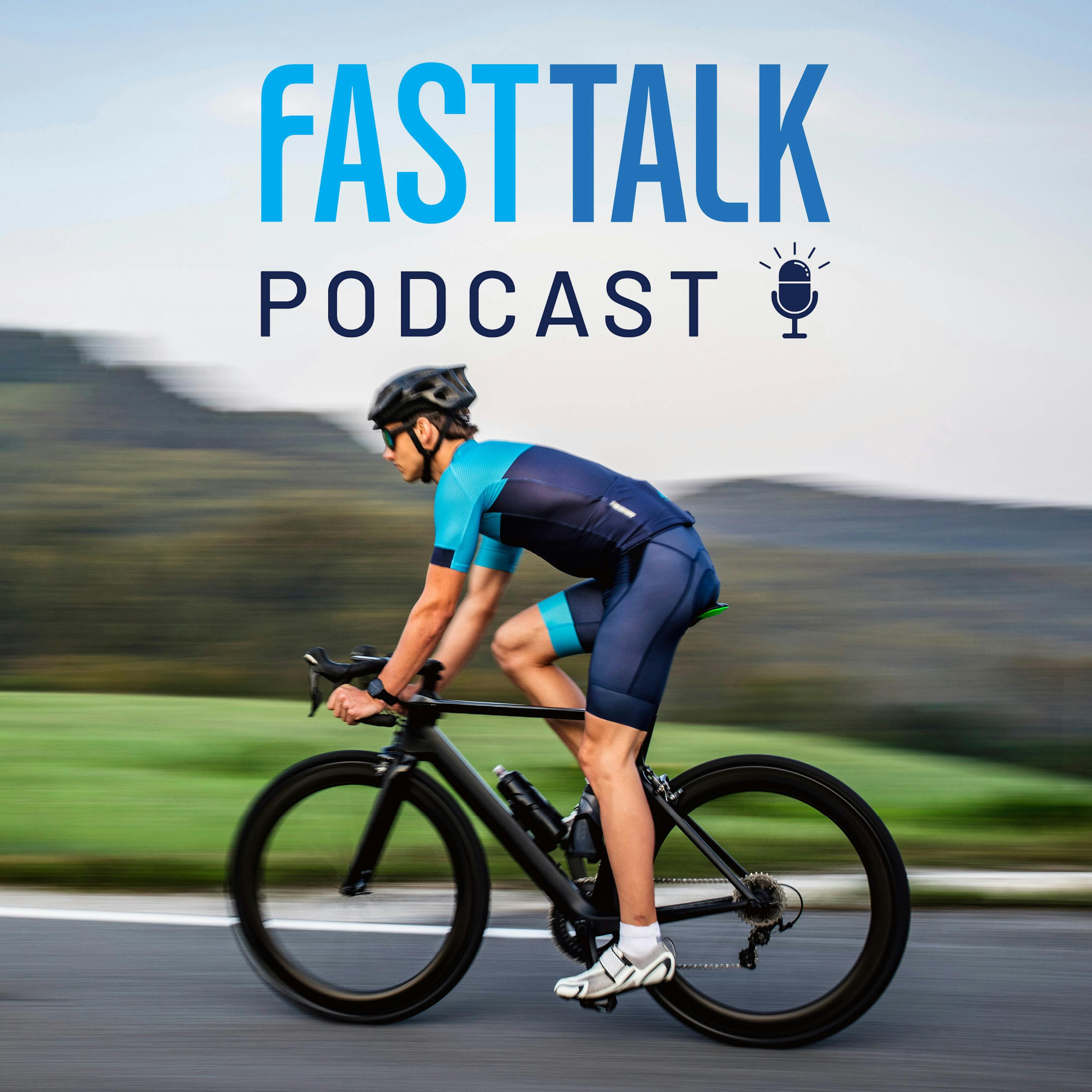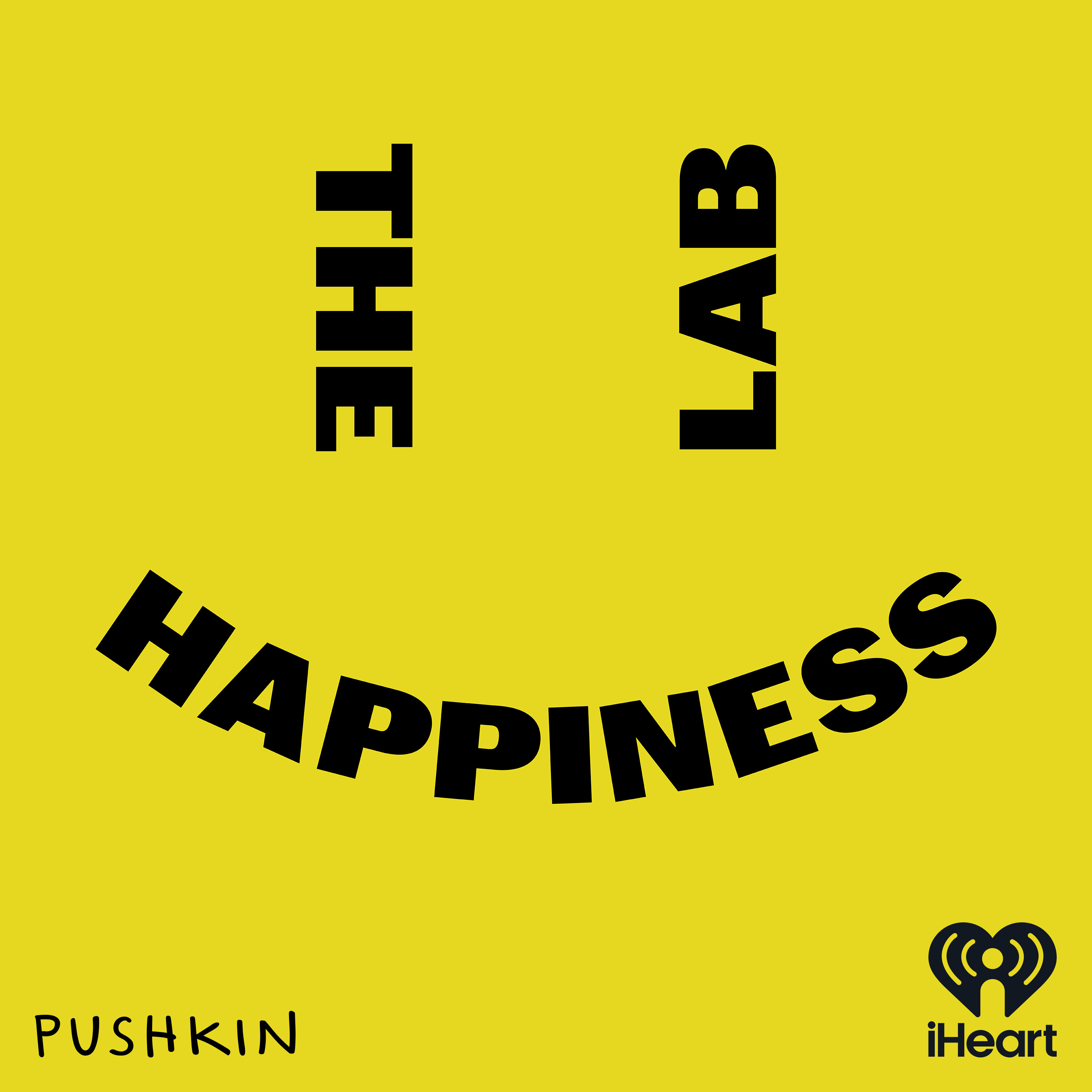
The Full Circle Podcast
The Full Circle Podcast offers listeners insights into topics and ideas pertaining to endurance sports training and racing. Hosted by Coach Laura Henry, this podcast releases episodes weekly and discusses training best practices, effective workouts, compelling research, coaching methodologies, physiology and recovery, and the best tools to help guide you unlock your potential and achieve your best performance.
The Full Circle Podcast is part of Full Circle Endurance, which is an endurance sports coaching company that serves athletes in many endurance sports, including triathlon, running, cycling, and open water swimming.
To learn more about how Full Circle Endurance can help you reach your goals, please visit us at: https://FullCircleEndurance.com/
The Full Circle Podcast
Now Impacts Later
What you do in training now impacts what you will be able to do later. Coach Laura discusses the importance of understanding this for optimal chances of successfully reaching your goals.
Ready to start training? Check out our Coaching and Training Plan options:
Learn more about Full Circle Endurance: https://FullCircleEndurance.com/
Submit questions to be answered on the show: https://FullCircleEndurance.com/podcast/
Reach out to Coach Laura Henry: Hello@FullCircleEndurance.com
Disclaimer: The information shared in this podcast is for educational and informational purposes only and is not a substitute for professional medical advice, diagnosis, or treatment. Always seek the advice of your qualified healthcare provider with any questions you may have regarding a medical condition or health goals. Never disregard professional medical advice or delay in seeking it because of something you heard on this podcast. Reliance on any information provided is solely at your own risk.
(0:04 - 0:31)
Hello, and welcome to the Full Circle Podcast, your source for insights into the science and art of endurance sports training and racing. I'm your host, Coach Laura Henry. Today, we're going to talk about how what you do now impacts what you do later, and more importantly, how what you do now has a direct correlation with what you will be able to do later.
(0:32 - 2:29)
One of the biggest mistakes that I see newer or self-coached athletes making is that they tend to want to add in something extra, whether that something extra comes in the form of extra volume or extra intensity, and they think that it seems harmless, so they do it. So whether they run for an extra half hour when they were supposed to run an hour, so that would represent a 50% departure from the planned workout, or if they took it up to a rating of perceived exertion of nine on a scale of one to 10, when they really should have been about at a six, which would be more moderate, they don't think that this has a big impact on the plan. And after so many years, 10 plus now, of being an endurance coach, and after more than 15 years of being an endurance athlete myself, I know that this is incredibly deceptive, because choices like this don't necessarily have an acute consequence, meaning they don't have a consequence that you can see and feel now.
However, they do have a consequence down the line. And unfortunately, by that time, many athletes, again, in that self-coached or newer athlete bucket, or perhaps maybe in the stubborn athlete bucket, don't understand why they're not hitting their goals, why they can't do a particular workout, why they are not feeling good in a workout or a series of workouts, and or why they're injured. And what I have found is that because they're so far removed from the decision or decisions that they made earlier in their training, they don't remember it, or don't consider it, or don't really believe that what they did in the past could possibly have snowballed to land them in their current less-than-desirable situation, whatever that situation is.
(2:30 - 3:18)
And that's the deception of it, right? Like that's where people kind of struggle and athletes struggle. And this is where I think coaching can be really helpful, because coaches can see that big picture. And because they're unbiased and they're not in with the athlete in that moment, they can provide a more neutral perspective of, hey, I know this may not seem like a big deal now, but, you know, hey, don't do this.
And they can kind of enforce those best practices that allow you to stay safe over the long haul. So just as important is what you don't do now will also snowball into what you're able to do later. So training in a typical plan or with a typical coach, I would say, in this industry is pretty progressive, meaning it builds on itself.
(3:19 - 4:36)
So there's this thing called the theory of progressive overload, meaning that a lot of training plans go through a series of workouts week over week where, let's say, take for example, if you have a long run in your schedule, if you have an hour one week, you might get progressed to an hour and 10 minutes or an hour and 15 minutes the following week. And then the week after that, you might have an hour and 20 minutes or an hour and 30-minute run on your schedule. And so basically, it's this series of systematic little steps that you take along the way to build up the tissue resilience and the durability in your body to be able to handle bigger and longer training later on.
And this all being said, training can only be safely progressed if the proper work is completed, if those foundational steps are taken. So trying to jump ahead to like a two-hour long run using our example from before from a one-hour run would be as if you were going up a flight of stairs and tried to jump literally five steps ahead. And thinking if you have that visual in your mind about like if you're going up a flight of stairs and you try to take your leg and swing it over five steps, it feels awkward, it feels weird, you wouldn't do that.
(4:36 - 4:53)
And the same thing applies in training, right? That you wouldn't want to take that step because it should feel awkward and uncomfortable. And again, it can snowball down the line. So if that proper work isn't completed in advance, it gets too risky to progress to the next thing.
(4:54 - 5:28)
So in my work, for instance, if I plan, again, using our long run example here, for an athlete to do a 90-minute or hour and 30-minute long run, and they either don't do it or maybe they only get an hour in, I don't progress. Even if that's what I originally might have planned to do, I don't progress beyond that 90 minutes because it's not safe for the athlete to do so. So what this ends up doing is that you may run the risk of running out of time to get to a place that would have built a significant amount of confidence.
(5:28 - 9:49)
So let's say that we were training for a half marathon. In a typical half marathon planner with an athlete who's working towards running to run a half marathon, I would typically aim to have them running their longest long runs at around two-ish hours if we were using a duration-based plan or approach. And that is multipurpose to do it that way because running that duration is going to build the athlete's confidence mentally that they can do it.
It's also going to be building the durability and resistance in the body to be able to handle that target goal, that distance, that 13.1 miles that they want to be doing. And if we don't get to that, like let's say if too many things are skipped earlier on in the plan and we can't get safely to that two-hour mark, then the athlete's going to feel that lack of confidence. So not only are they going to be physically underprepared, but mentally, they're going to be underprepared as well.
So basically, skipping or cutting workouts, especially key or the long workouts in a plan can delay the progression resulting in the final progression that may be short of what we were originally aiming for or what the ideal was for that athlete. All of this being said, it is always, always best to work exactly where you are. And this is so important to take into consideration because all too often I watch, especially self-coached athletes and newer athletes train to where they think they're supposed to be in the training plan or in the timeline to their race or their target goals.
So for instance, this comes up a lot in marathon training where about a month out from the marathon, the athlete should be somewhere in the three to four-hour range for long runs, depending on what pace the athlete is running, or if they're going on miles, they probably should be between 16 and 20 miles for their longer runs at that point. And they'll see whether it's on social media or in other training plans, like, oh gosh, this is where I quote unquote should be at this point in my plan, but I've only run 10 miles or I've only run two hours. And they feel that gap of where they are versus where they should be.
So what a lot of self-coached or newer athletes or stubborn, in my opinion, athletes will often do is they'll try to force it. They'll try to force themselves into where they quote unquote should be. So they'll try to go for that 18-mile long run or that three-hour long run when maybe they've only run two hours or they've only run 12 miles.
And that's really, really risky because it really increases the probability of injury, which is the number one enemy of all athletes in training in terms of goal preparation. It just sidelines you. You can't get your training done if you're injured, and then you end up falling short of the goal for sure if that happens.
So everything that we do and every approach that I take in my work with the athletes I work with is to prevent injury. So what I've observed that correlates with this is that when athletes feel anxious leading into a race, it's almost always, at least in part, if not entirely, due to the following. They can feel that they are not as prepared as they could have been.
And so whether that preparation is mental or physical or both, they can feel that where they're at is not where they could have been or maybe even where they quote unquote should be. And athletes don't tend to feel this in a significant way until they're near race day or at race day itself. As athletes get closer to race day, they start to feel the stress of this a little bit more and the pressure kind of builds.
And this is different than what athletes tend to feel six weeks, three months, six months out. They don't feel that same preparedness, lack of preparedness. And I think sometimes this has to do with the fact that athletes feel like, oh, I'm going to have so much time or I have plenty of time to catch up or I'll get there.
(9:49 - 10:44)
And as the timeline gets reduced and race day is looming or their goal is looming, they are confronted with the reality that they're out of time. And so this is where it's really important to keep this perspective early on that what you do now impacts what you are going to be able to do later. And then what you don't do now is also going to impact what you're able to be doing later.
I believe very firmly that it is better to show up on race day 15% quote unquote undertrained than 1% overtrained and injured. So if an athlete shows up undertrained, we can typically for one day and race day is the day to take this risk, take the risk of going above what was previously trained to. So this is why training plans and coaches will advise that athletes don't do the full distance of their event in training and they only do a percentage of it.
(10:44 - 14:27)
So this is why like 20 mile runs are really common as the longest run in a marathon training plan, or 11 mile long runs are the longest run in a half marathon training plan, or in an Ironman event, maybe a hundred mile bike ride in a three hour run is the longest that the athlete will get to and so on. So when race day comes though, it's okay to take this risk, especially if the athlete is rested and tapered, which is happening when we decrease volume and intensity leading into race day to basically freshen up the body for that effort. So the risk is mitigated by the taper for race day and by the fact that it is literally a single day.
We would rather have that undertrained-ness because even with the under training, the freshness and the lack of injury is going to increase the probability that the athlete will have a successful outcome than if they're injured, because if the athlete is overtrained and or injured, either race day is not going to go as planned or in a worst case scenario, it'll result in a DNS, a did not start, or a DNF, a did not finish, which happens if the athlete starts the race and then doesn't cross the finish line. So what are some key takeaways from the conversation that we've had today? I encourage all athletes to be patient and to resist the temptation to add in more volume and intensity prematurely before the plan or the coach is calling for it. It may make an athlete feel good or better about themselves and the training in the short term, but this is often a farce.
It's extremely misleading. Like I said earlier, it's extremely deceptive. It literally is just that.
It's like a quick fix, it's a dopamine hit, and then it snowballs. And again, athletes cannot fully appreciate how much it snowballs, but I've worked with a lot of athletes for multiple years. 70% of the current group of athletes that I'm coaching has been with me for three or more years.
And so because of those longstanding relationships that I've developed with those athletes, I've been able to see how their decisions and our decisions together add up over time. And this is really valuable information, not only for me to get to learn them as individuals, but for me as a coach in the work that I do with other athletes. I learn from each athlete that I work with, and then I take what I learned from each athlete that I work with and implement that in the other work that I do with other athletes.
So be patient. Also, understand that if you skip or miss something, it will snowball and potentially shortchange where you're able to go in training, which is going to lead to a potential for some anxiety before race day because you may feel like, oh, maybe I should have done a little bit more work. Maybe I should have prioritized things a little differently.
And I can tell you from personal experience, one of the worst feelings that you can feel is that if you show up on race day and feel like you know exactly what made you have the day you had, or what led to where you are, and or what led to the situation that you're in. Like if you know, like I've been here, where I knew, ooh, I didn't do enough. And now I'm going to pay the price for that.
I'm not going to reach the goal that I set for myself. That's really frustrating and it's really disappointing. And that's not what I want for athletes, whether I work with you or not, it's just not what I want for you.
So what you do in training matters always. Be consistent, lay down a foundation of getting in work consistently, frequently over time. Be patient with yourself over time.
(14:28 - 15:24)
And believe it or not, slowly by slowly, you will get to where you want to go, because what you do now does impact what you're going to do later. That was another episode of the Full Circle Podcast. Subscribe to the Full Circle Podcast wherever you listen to your favorite podcasts.
If you like what you listened to, please be sure to leave us a rating and review as this goes a long way in helping us reach others. The thoughts and opinions expressed on the Full Circle Podcast are those of the individual. As always, we'd love to hear from you and we value your feedback.
Please send us an email at podcast at fullcircleendurance.com or visit us at fullcircleendurance.com backslash podcast. To find training plans, see what other services we offer or to join our community, please visit fullcircleendurance.com. I'm Coach Laura Henry. Thanks for listening.
Podcasts we love
Check out these other fine podcasts recommended by us, not an algorithm.

Fast Talk
Fast Talk Labs
excellence, actually
Steve Magness, Brad Stulberg, & Clay Skipper
Deep Questions with Cal Newport
Cal Newport
